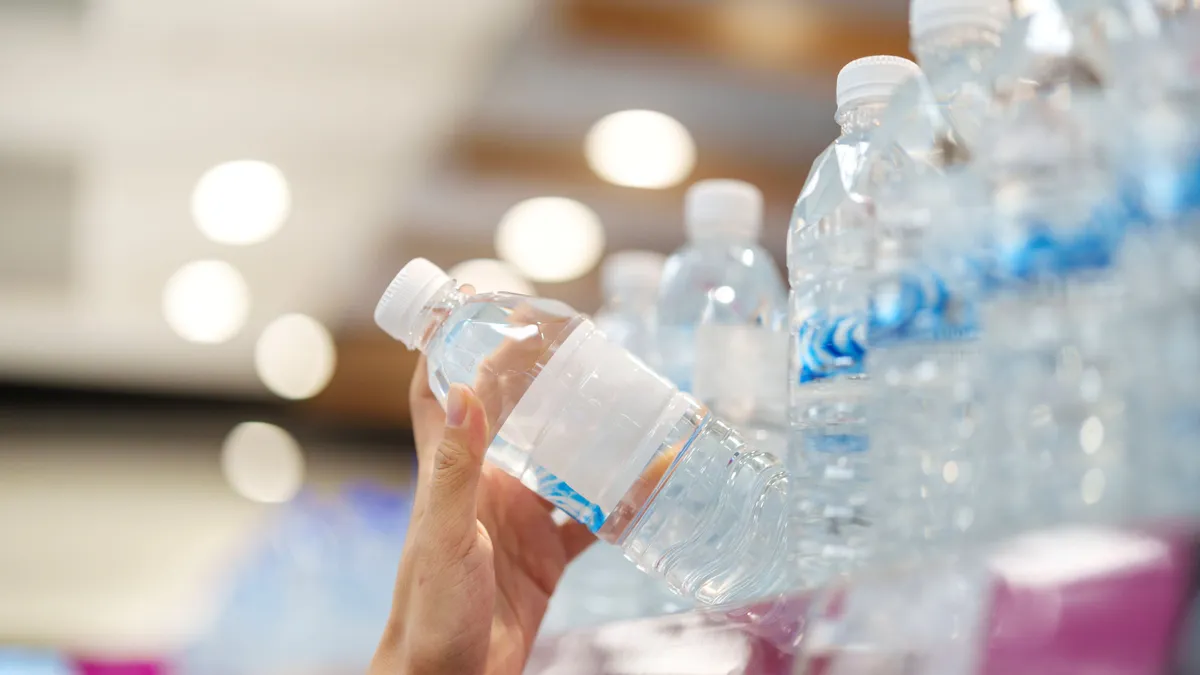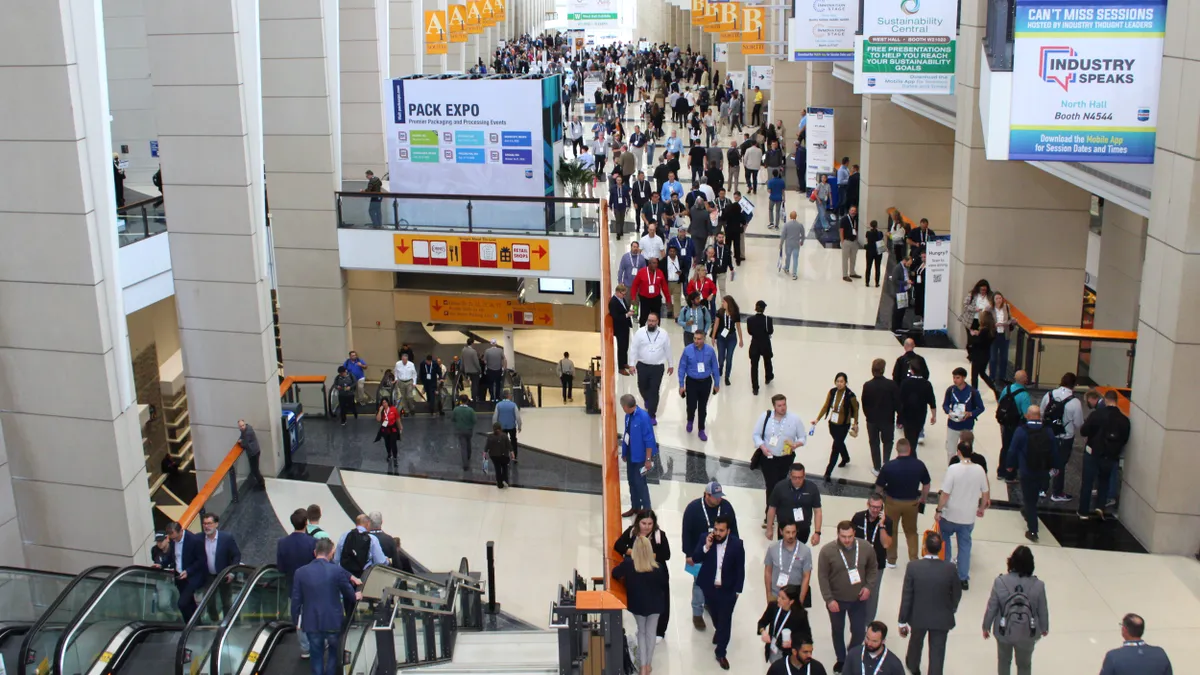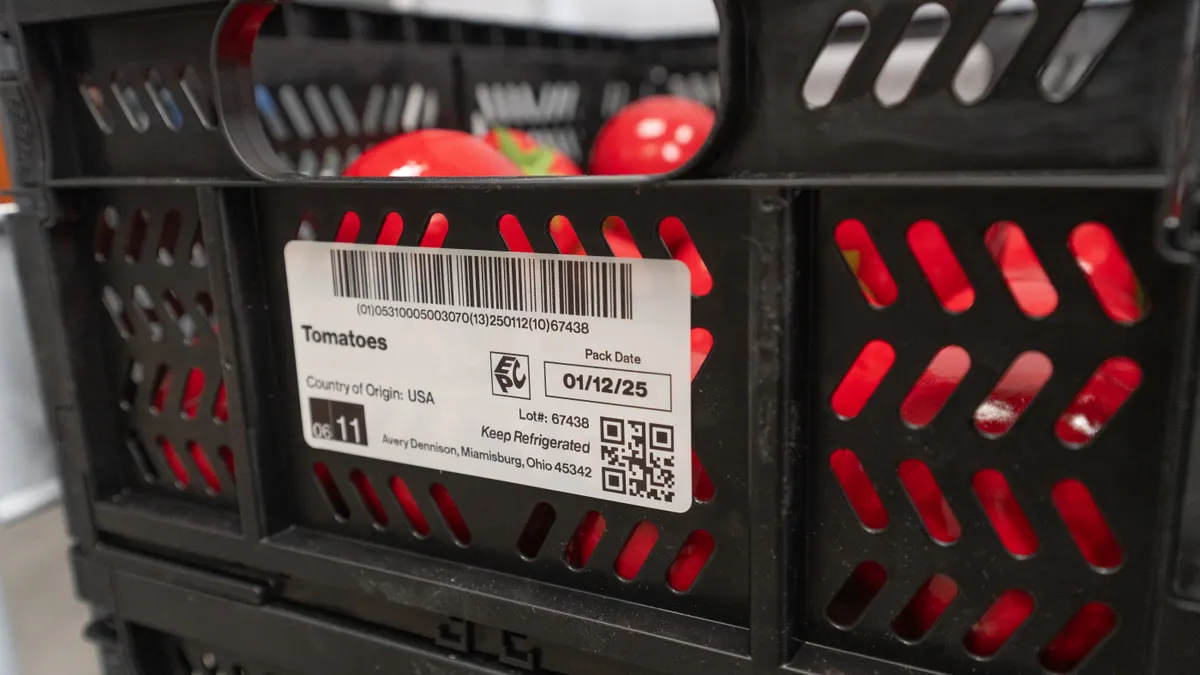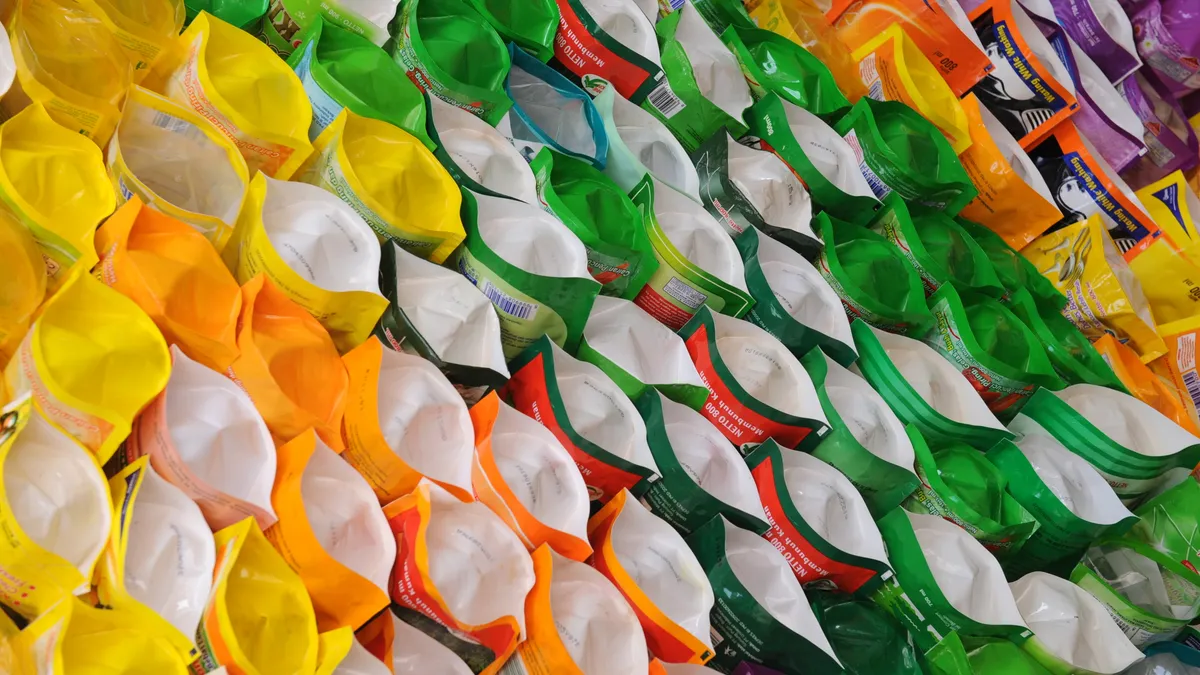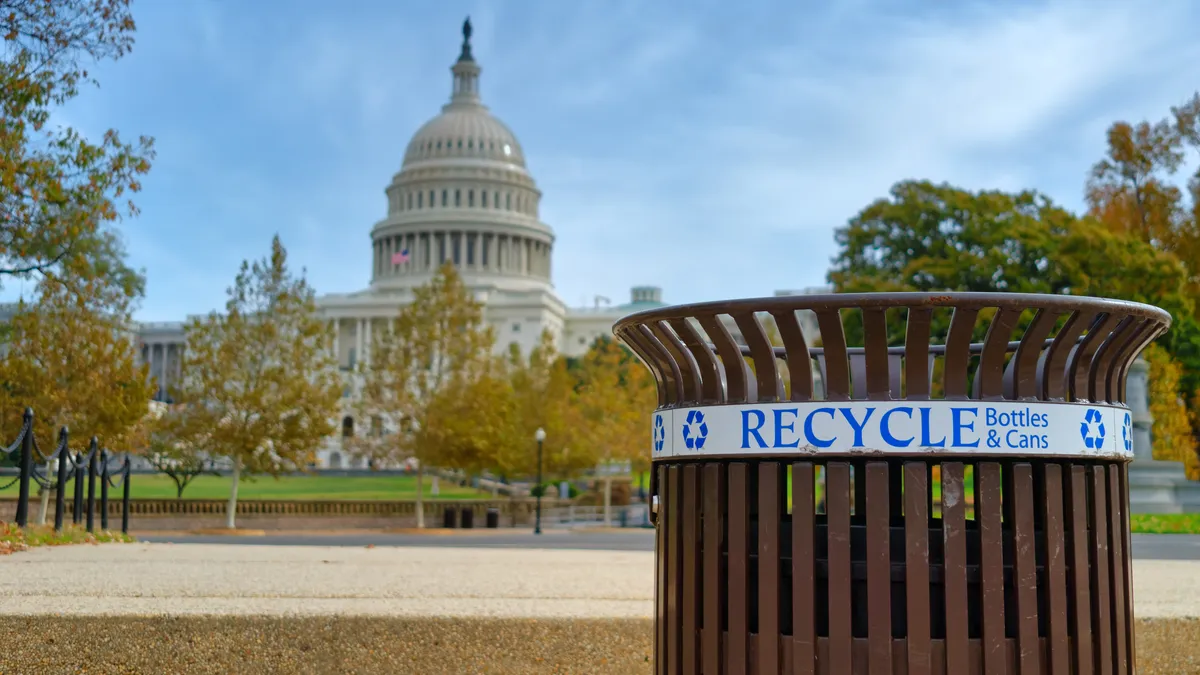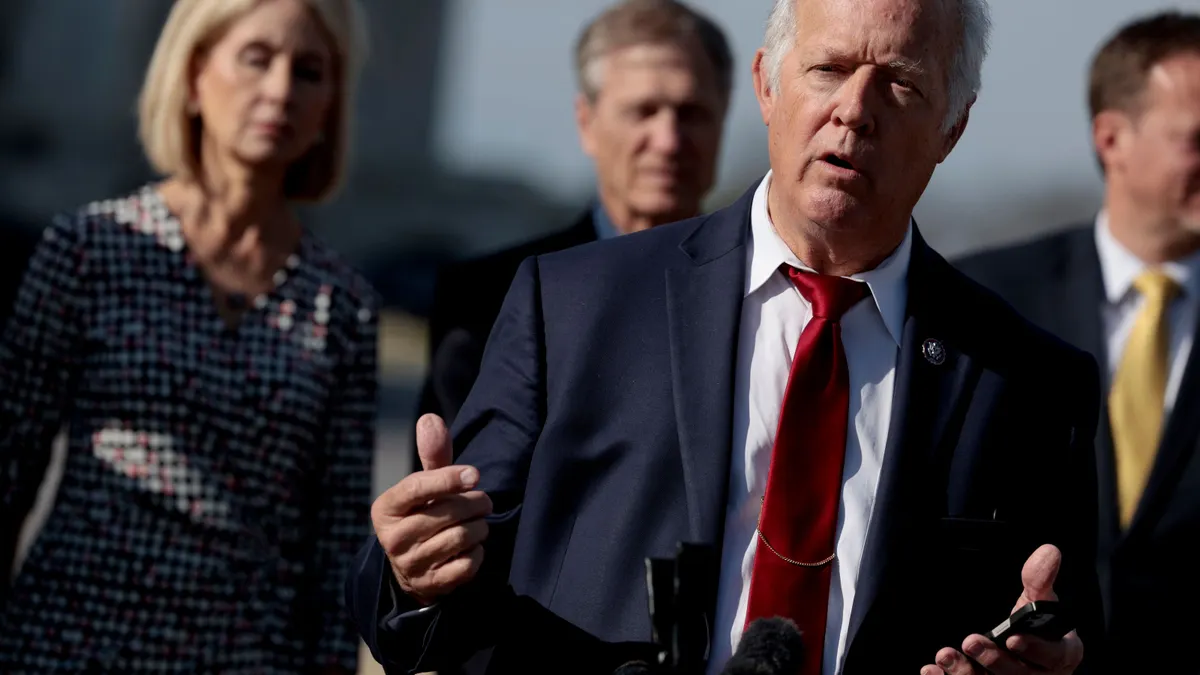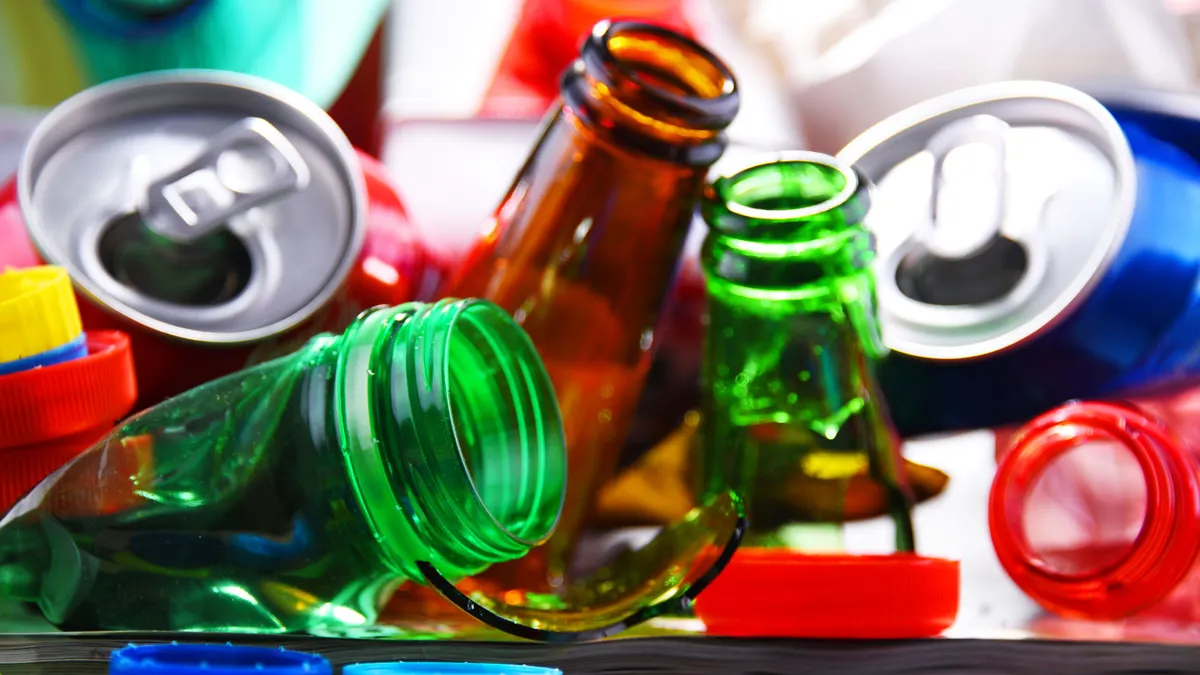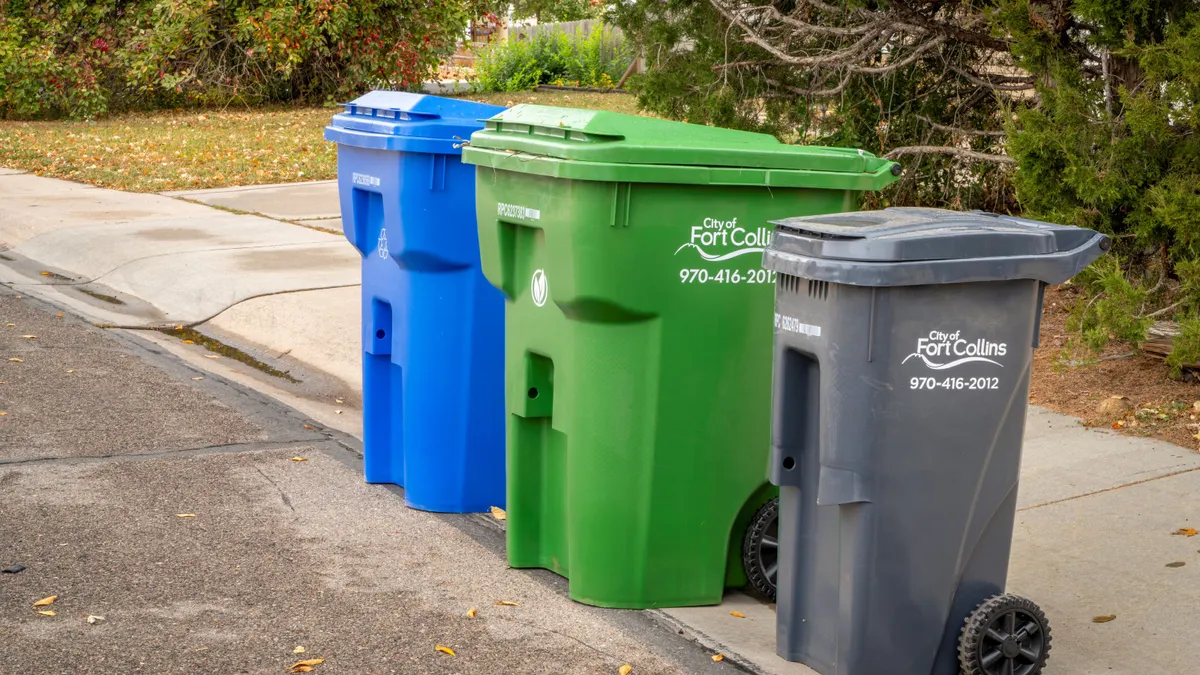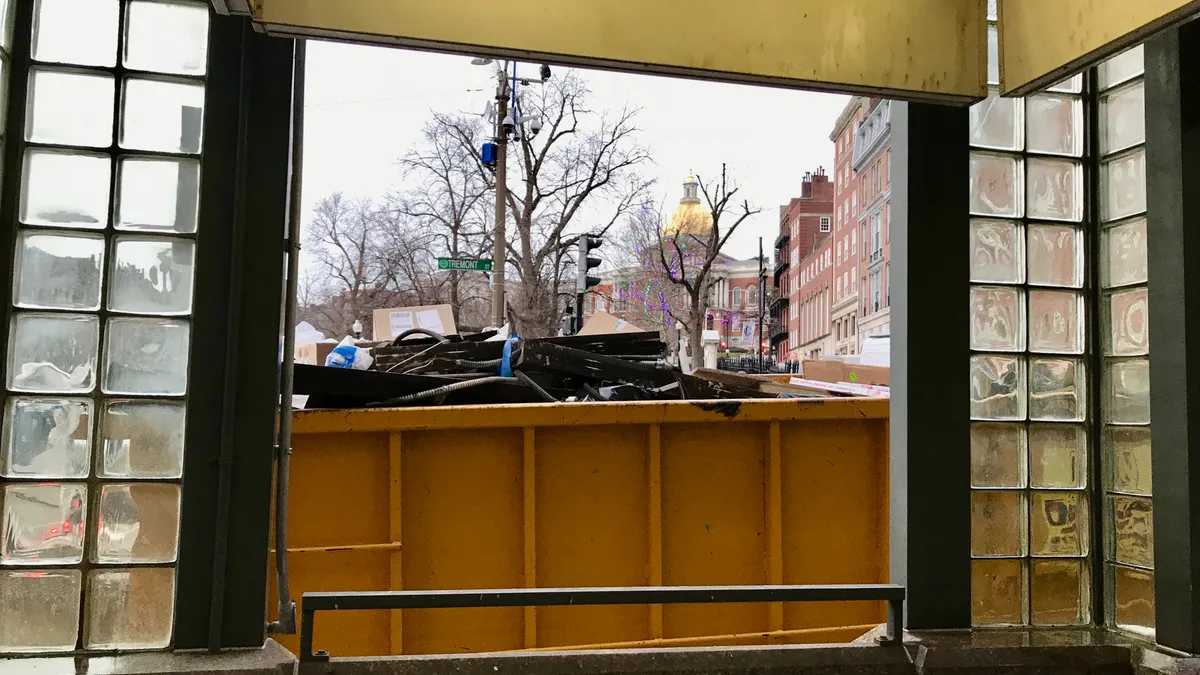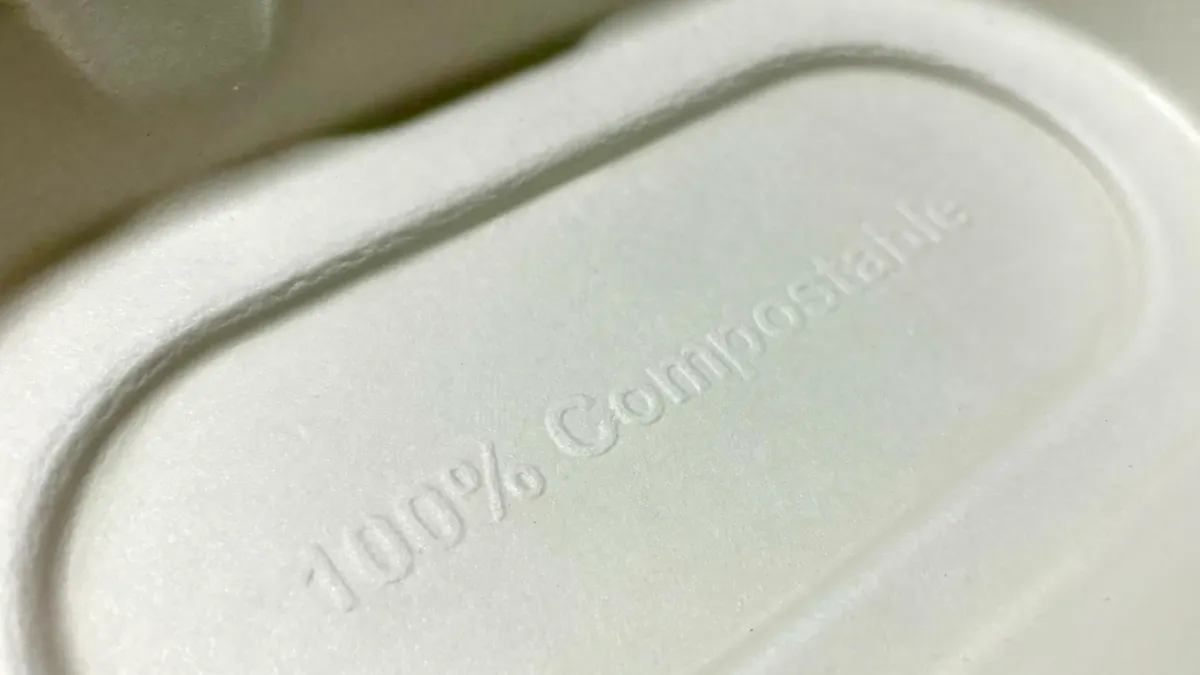Consumer product companies are adapting, albeit with some challenges, as multiple states look to ramp up recycled plastic requirements for beverage containers and other packaging.
Washington state has begun enforcing a 2021 law that mandated various levels of recycled content in certain packaging types starting in 2023. This comes as a handful of other states have also enacted their own laws, each with their own product focuses, thresholds and timelines.
“It's important that Washington in particular is doing enforcement, because we want a level playing field,” said Kate Bailey, chief policy officer at the Association of Plastic Recyclers. “Everyone should be held to the same standard.”
At baseline, Washington’s monitoring relies on producers’ own reporting — the law does not contain a third-party certification requirement to confirm data accuracy, the Washington State Department of Ecology noted.
Environmental regulators there recently doled out more than $400,000 in fines across 35 companies — a list that included notable names like Clorox, Ocean Spray and Albertsons — for not incorporating enough recycled plastic in products.
While those few-dozen companies were fined, the other side of the coin is that many more registered producers successfully complied, Bailey noted.
And some brands have exceeded expectations. In California, for instance, in 2023 Niagara Bottling was the leading user of PCR plastic in the state at nearly 37.3 million pounds — which already put it at about 26% of recycled content across its overall reported plastic use, according to data published by CalRecycle. AB 793 required a postconsumer plastic recycled content standard of 15% starting in 2022 and 25% and 50% come 2025 and 2030, respectively, for plastic beverage containers subject to the California Refund Value.
Bailey called it “an important step forward” that Washington has the resources to ensure its law is enforced, and that in general it seems like brands are registering and complying without many waivers.
Still, there are shortcomings. Washington’s Department of Ecology described non-registration as its “greatest challenge with compliance” and estimates there are between 200 and 300 obligated producers that have not yet registered.
“This is particularly difficult when producers are not easily identifiable by a brand on the shelves, but may in fact be registered by a manufacturer with little to no brand recognition to the general public,” said Dave Bennett, the Department of Ecology’s communications manager for the solid waste management program, in an email.
While states are writing their laws differently, in Washington’s view enforcement can be one area for collaboration. “We plan to work with other states implementing recycled content laws and compare their registrants with ours,” Bennett wrote.
New Jersey, Connecticut and Maine are also states with recycled plastic requirements for certain types of beverage containers, although the latter two don't initially come into force until 2026.
Multiple brands in recent years have named limited access to recycled material as a key obstacle when reporting on voluntary recycled content or virgin plastic reduction goals in sustainability reports. At the same time, companies selling recycled plastic have repeatedly said there need to be stronger, longer-term and more reliable commitments from buyers to sustain the market.
From APR’s vantage point, supply seems to be largely available to meet laws’ current thresholds.
“I think some of the supply conversation is really also looking more into the future projections,” Bailey said. As with other state policies, Washington’s recycled content thresholds will ramp up by product type in the coming years. For instance, plastic beverage containers had to contain 15% recycled content in 2023, but requirements will increase to 25% come 2026 and 50% come 2031.
However, the Consumer Brands Association reiterates that “demand is far outpacing supply,” according to John Hewitt, senior vice president of packaging and sustainability and head of state affairs.
Many of the registrants that did not meet Washington’s minimum PCR requirements were juice producers, Bennett noted. “We have received some feedback to suggest that there is difficulty sourcing recycled content hot-fill polypropylene used in many of the beverage containers sold by these types of companies,” he said.
Additionally, the lack of uniformity of rates and dates across state laws is a challenge for packaging designers, Consumer Brands observed.
As companies redesign product packaging to comply in Washington, “they have to keep in mind that because they may meet the 2023 or 2026 mandate, doesn't mean that they're going to be ready or in a spot to meet the New Jersey mandate that may be happening within the next 12 months,” said Hewitt. “That contemplation, that constant churn in the packaging types, makes it very difficult to ensure that the packaging serves its ultimate purpose, which is to protect the product and protect the consumer.”
Hewitt said that as CPGs work to meet internal targets, “they oftentimes have to either pause or redirect those efforts” to meet various state requirements “because those dates don't necessarily all line up.”
And the nature of supply chains make it hard to design for a specific market, Hewitt said. But Bailey also called that out as an important driver of change. “It speaks to the power of individual states taking action. It can drive an entire market in some cases,” she said.
Industry groups anticipate states will continue to legislate on these issues. Early experiences with scale-up of these laws inform what they’d like to see in policy design going forward.
For the Consumer Brands Association, it’s important that legislation has “on-ramps” that take into account nuance by packaging type, as well as different requirements from agencies like the U.S. EPA and FDA, Hewitt said. Consumer Brands also advocates for being able to average recycled content levels across a portfolio; “that helps us take into account supply chain issues.”
For APR’s part, Bailey said that while numerous state policies have largely focused on beverage containers, APR would like to see more recycled content in durable good applications like pallets or trash bags.
Looking ahead, Washington’s Department of Ecology is interested in feedback on best practices from brands that have been successful in meeting or exceeding recycled content thresholds. That’s currently a knowledge gap because “Washington’s law does not allow for eco-modulation to reward producers who go above and beyond with recycled content use, and thus, we do not ask for additional narrative information in our reporting platform to understand producers’ individual processes or supply chains,” Bennett wrote.


